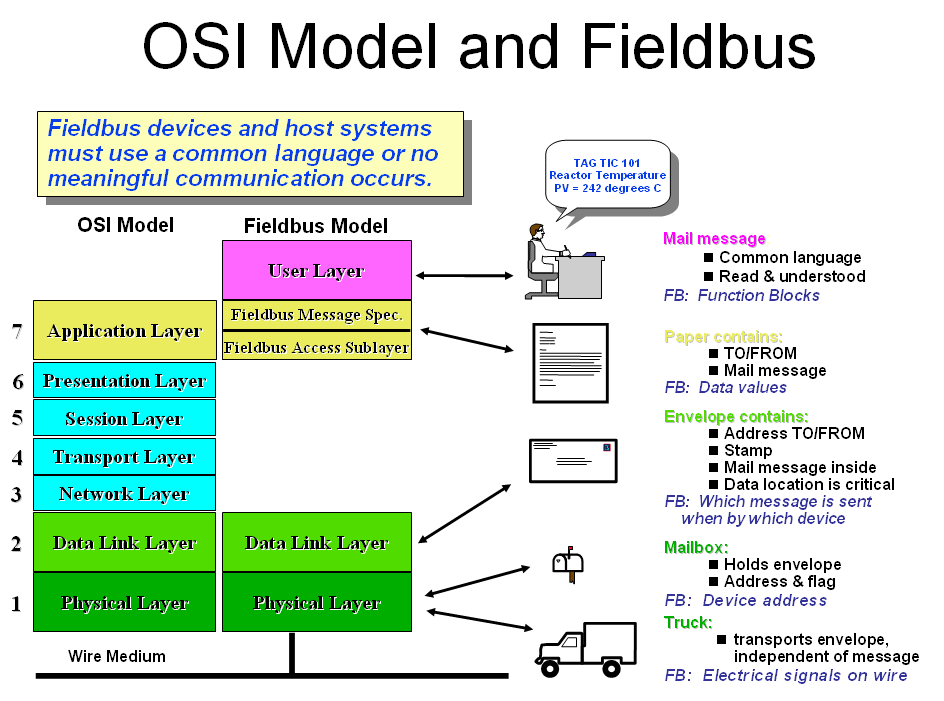
Automation networking: Navigating the layers
May 10, 2006
By Ian Verhappen
There are many different industrial networking protocols available from a variety of different suppliers and consortia. Each protocol is best suited to a particular industry segment. For example: continuous processes and Foundation Fieldbus; manufacturing and Profibus or ControlNet; assembly lines and AS-i, DeviceNet or Profibus; building automation and LonWorks or BacNet; and automobiles and CAN. (Please note, however, that the aforementioned protocols are examples and it is not meant to be an exhaustive list.)
Almost all of these protocols have a corresponding Ethernet-based version for integration at the controller and system levels of the control system. The seven-layer ISO/OSI model shown in Figure 1 is shared by all of these protocols and, in many cases, the protocol itself adds an eighth user layer on top of the application layer. It is this user layer that contains the core differentiating part of the protocol.

This figure equates the transfer of a message to the mailing of a letter. The person sending the letter starts at the user layer, then sends the letter to the physical layer for transmission to the person receiving the letter, which must then go back up through the layers to the person reading the note. Buses work the same way.
The OSI model is important because it defines each layer of the model separately, thus isolating the requirements of the physical layer from the data link layer and so on. Many protocols combine layers three through seven into a single specification because the communications are not complex enough to require cross-network communications. A standard is created for each layer, and these layers are then combined to create the complete protocol.
The layer we are all most familiar with is the physical layer. In most industrial networks this is copper wire, though it can also be fibre, coaxial cable or wireless without necessitating a change to the protocol. The same is true for each of the other six layers of the OSI model.
It is this separation of layers that makes industrial Ethernet possible. Ethernet is a layer one protocol, while TCP, UDP and IP are layer two and three protocols. Therefore, every industrial protocol can reuse the "upper" OSI model layers and its user layer to create an Ethernet-based version of itself, while retaining and encapsulating all of its functionality without having to reinvent it. This represents a huge savings to developers, manufacturers and end-users in the development, support and integration of Ethernet-based systems with their associated base protocol.
If you have any suggestions for this column or topics you would like to see covered, please send me a note and I will try to include it in the future as it fits with the editorial calendar.
BUS BITS
NEC Electronics and Siemens have agreed to collaborate on the Enhanced Real Time Ethernet Controller (ERTEC) product line of the Profinet standard.
Pepperl+Fuchs have a new Profibus Gateway for Remote Process Interface (RPI). This new gateway features an integrated HART multiplexer that integrates HART functionality on a Profibus system without additional wiring or barriers. They have also released a new fieldbus power hub that provides both redundancy and galvanic isolation.
SERCOS recently celebrated its 20th anniversary. Over the past 20 years, more than 1.5 million nodes have been installed around the globe. Other recent announcements from this group include the release of a number of SERCOS III products, including the SERCOS safety concept, a protocol extension compatible with the established transmission mechanisms of the SERCOS interface. The SERCOS interface can be used within safety applications up to SIL 3 (Safety Integrity Level), according to IEC61508, even with short cycle times.
If you have questions about the Modbus protocol, you may want to have a look at www.modbus.org.
Ian Verhappen, P.Eng. is an ISA Fellow and director of ICE-Pros, Inc., an independent instrument and control engineering consulting and training firm specializing in fieldbus, process analyzer systems and oil sands instrumentation and control. E-mail him at Ian.Verhappen@ICE-Pros.com, or visit his website, www.ICE-Pros.com.
Advertisement
- Road to recovery: Lessons learned from Harley-Davidson
- The tip-over phenomenon: Why can’t Johnny read?